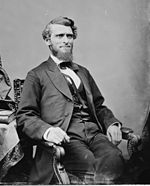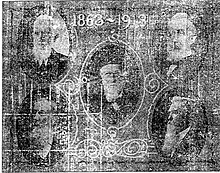
Putnam County is a county in the U.S. state of West Virginia. As of the 2020 census, the population was 57,440. Its county seat is Winfield, its largest incorporated city is Hurricane, and its largest community is the census-designated place of Teays Valley. Putnam County is part of the Huntington–Ashland, WV-KY-OH Metropolitan Statistical Area, across the Kanawha River from Charleston, West Virginia.

The history of West Virginia stems from the 1861 Wheeling Convention, which was an assembly of northwestern Virginian Southern Unionists, who aimed to repeal the Ordinance of Secession that Virginia made during the American Civil War (1861–1865). It became one of two American states that formed during the American Civil War – the other being Nevada in 1864. It was the only state to form from another state during this time, splitting from Virginia. West Virginia was officially admitted as a U.S. state on June 20, 1863.

Waitman Thomas Willey was an American lawyer and politician from Morgantown, West Virginia. One of the founders of the state of West Virginia during the American Civil War, he served in the United States Senate representing first the Restored Government of Virginia and became one of the new state of West Virginia's first two senators. He is one of only two people in U.S. History to represent more than one state in the U.S. Senate, the other being James Shields.

John Snyder Carlile was an American merchant, lawyer, slaveowner and politician, including a United States senator. A strong supporter of the Union cause during the American Civil War, he represented the loyalist faction of Virginia, which was eventually separated into two distinct states.

The Virginia Conventions have been the assemblies of delegates elected for the purpose of establishing constitutions of fundamental law for the Commonwealth of Virginia superior to General Assembly legislation. Their constitutions and subsequent amendments span four centuries across the territory of modern-day Virginia, West Virginia and Kentucky.

The U.S. state of West Virginia was formed out of western Virginia and added to the Union as a direct result of the American Civil War, in which it became the only modern state to have declared its independence from the Confederacy. In the summer of 1861, Union troops, which included a number of newly formed Western Virginia regiments, under General George McClellan, drove off Confederate troops under General Robert E. Lee. This essentially freed Unionists in the northwestern counties of Virginia to form a functioning government of their own as a result of the Wheeling Convention. Prior to the admission of West Virginia the government in Wheeling formally claimed jurisdiction over all of Virginia, although from its creation it was firmly committed to the formation of a separate state.
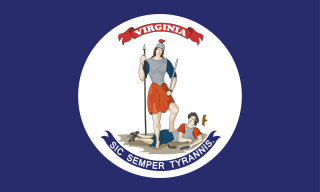
The American state of Virginia became a prominent part of the Confederacy when it joined during the American Civil War. As a Southern slave-holding state, Virginia held the state convention to deal with the secession crisis, and voted against secession on April 4, 1861. Opinion shifted after the Battle of Fort Sumter on April 12, and April 15, when U.S. President Abraham Lincoln called for troops from all states still in the Union to put down the rebellion. For all practical purposes, Virginia joined the Confederacy on April 17, though secession was not officially ratified until May 23. A Unionist government was established in Wheeling and the new state of West Virginia was created by an act of Congress from 50 counties of western Virginia, making it the only state to lose territory as a consequence of the war.

George Western Thompson was a nineteenth-century Virginia politician, lawyer and judge. He served one term in the U.S. House of Representatives, resigning to become a state judge. During the American Civil War Judge Thompson resigned that position as because he believed the creation of West Virginia to be illegal.

John James Davis was an American attorney and politician who helped found West Virginia and later served as a United States representative in Congress from that state.

Chester Dorman Hubbard was a two-term U.S. Representative from West Virginia, who previously served in the Virginia General Assembly and Virginia Secession Convention of 1861 before the American Civil War and who helped found the state of West Virginia.

The RestoredGovernment of Virginia was the Unionist government of Virginia during the American Civil War (1861–1865) in opposition to the government which had approved Virginia's seceding from the United States and joining the new Confederate States of America. Each state government regarded the other as illegitimate. The Restored Government attempted to assume de facto control of the Commonwealth's northwest with the help of the Union Army but was only partly successful. It raised Union regiments from local volunteers but depended upon recruits from Pennsylvania and Ohio to fulfill its commitments. It administered this territory until, with its approval, the area became part of West Virginia in mid-1863.
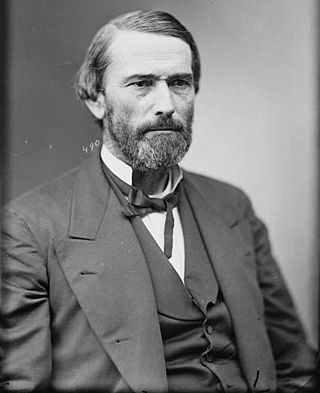
Benjamin Wilson was an American lawyer and Democratic politician who served as a United States Representative from West Virginia) (1875–1883) and as an assistant attorney general during the administration of President Grover Cleveland.

The East Tennessee Convention was an assembly of Southern Unionist delegates primarily from East Tennessee that met on three occasions during the Civil War. The Convention most notably declared the secessionist actions taken by the Tennessee state government on the eve of the war unconstitutional, and requested that East Tennessee, where Union support remained strong, be allowed to form a separate state that would remain part of the United States split from the rest of Confederate Tennessee. The state legislature denied this request, and the Confederate Army occupied the region in late 1861.
Ephraim Benoni Hall was the second West Virginia Attorney General.
Virginia v. West Virginia, 78 U.S. 39 (1871), is a 6-3 ruling by the Supreme Court of the United States that held that if a governor has discretion in the conduct of the election, the legislature is bound by his action and cannot undo the results based on fraud. The Court implicitly affirmed that the breakaway Virginia counties had received the necessary consent of both the Commonwealth of Virginia and the United States Congress to become a separate U.S. state. The Court also explicitly held that Berkeley County and Jefferson County were part of the new State of West Virginia.
James Sanders Wheat was the Attorney General of Virginia in Union held territory from 1861 to 1863.

Mason Mathews was an American merchant and politician in the U.S. State of Virginia. He served in the Virginia House of Delegates, representing Greenbrier County from 1859–1865 as a Whig. This period included the secession of Virginia and the resulting American Civil War of 1861–1865. Though Mathews opposed secession, he chose to support the Confederate States of America when Virginia seceded. Throughout the war, much of his efforts were directed toward the Confederate defense of western Virginia. When his home of Greenbrier County was taken into the new State of West Virginia in 1863, he continued to represent Greenbrier County in Virginia's Confederate legislature in Richmond until war's end. He was a member of the Mathews political family.
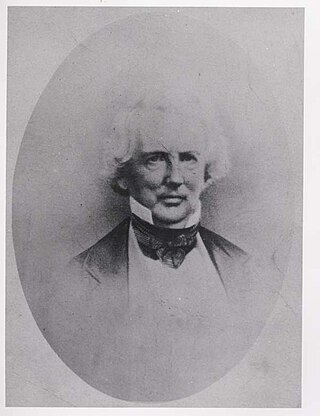
The Virginia Secession Convention of 1861 was called in Richmond to determine whether Virginia would secede from the United States, govern the state during a state of emergency, and write a new Constitution for Virginia, which was subsequently voted down in a referendum under the Confederate Government.
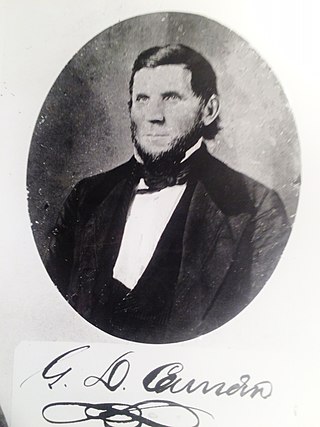
Gideon Draper Camden was an American lawyer, judge and politician who opposed the creation of the state of West Virginia and sympathized with the Confederacy, but later served in the West Virginia Senate representing Harrison County.
On June 20, 1863 the U.S. government created a new state from 50 western counties of Virginia to be named "West Virginia". This was done on behalf of a Unionist government in Wheeling, Virginia, approved by Congress and President Lincoln, though it was done with a low participation of the citizens within the new state. There remained a large number of counties and citizens who still considered themselves as part of Virginia and the Confederacy which, in turn, considered the new state as part of Virginia and the Confederacy. In 1861 the 50 counties contained a population of 355,544 whites, 2,782 freemen, 18,371 slaves, 79,515 voters and 67,721 men of military age. West Virginia was the 6th most contested state during the war, with 632 battles, engagements, actions and skirmishes.
